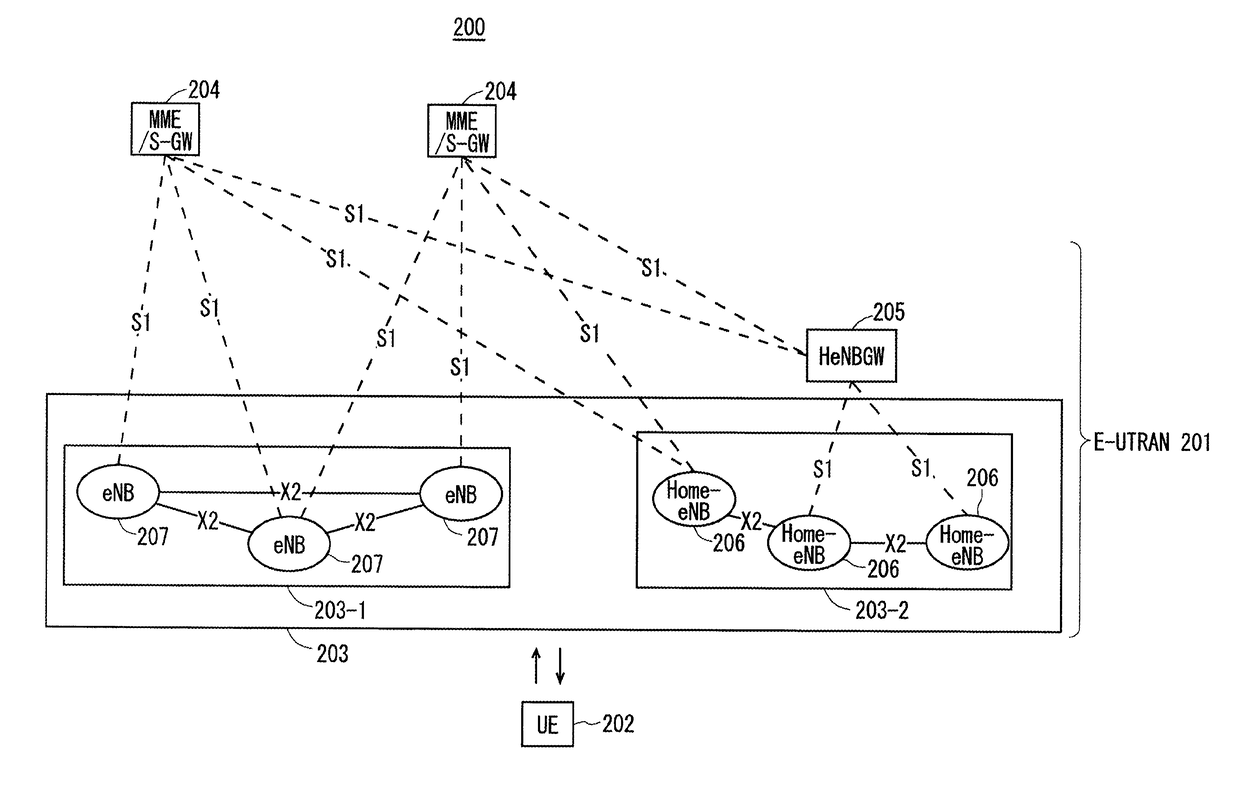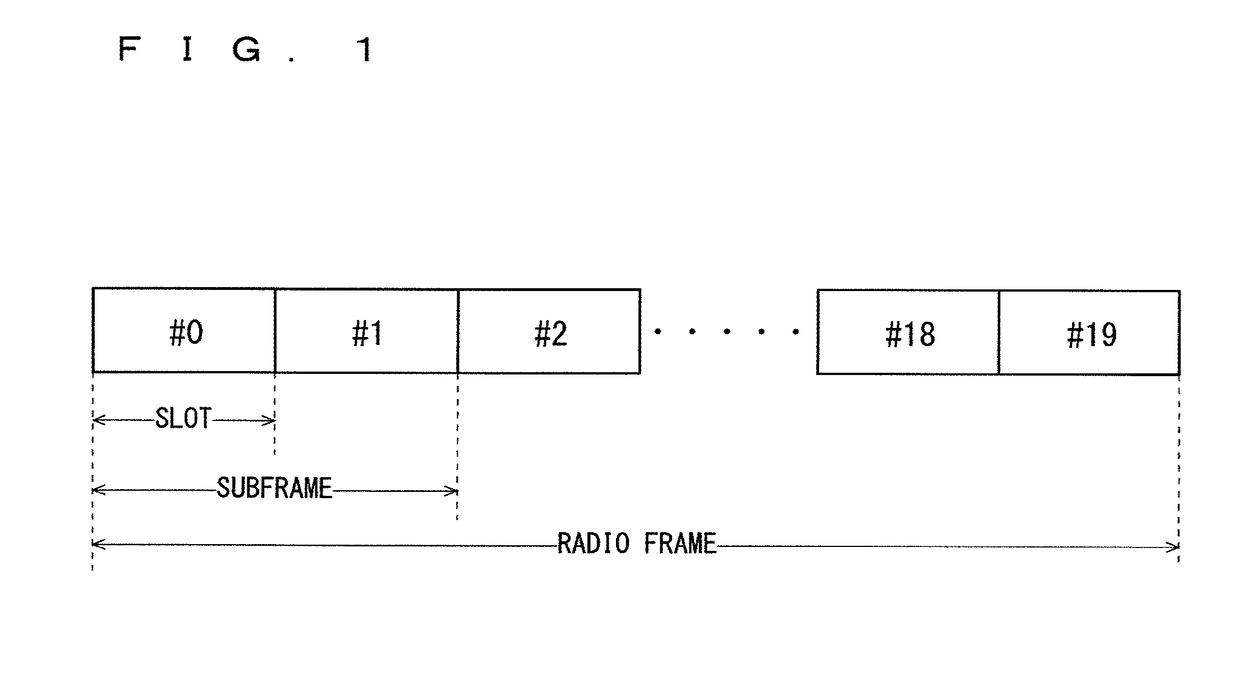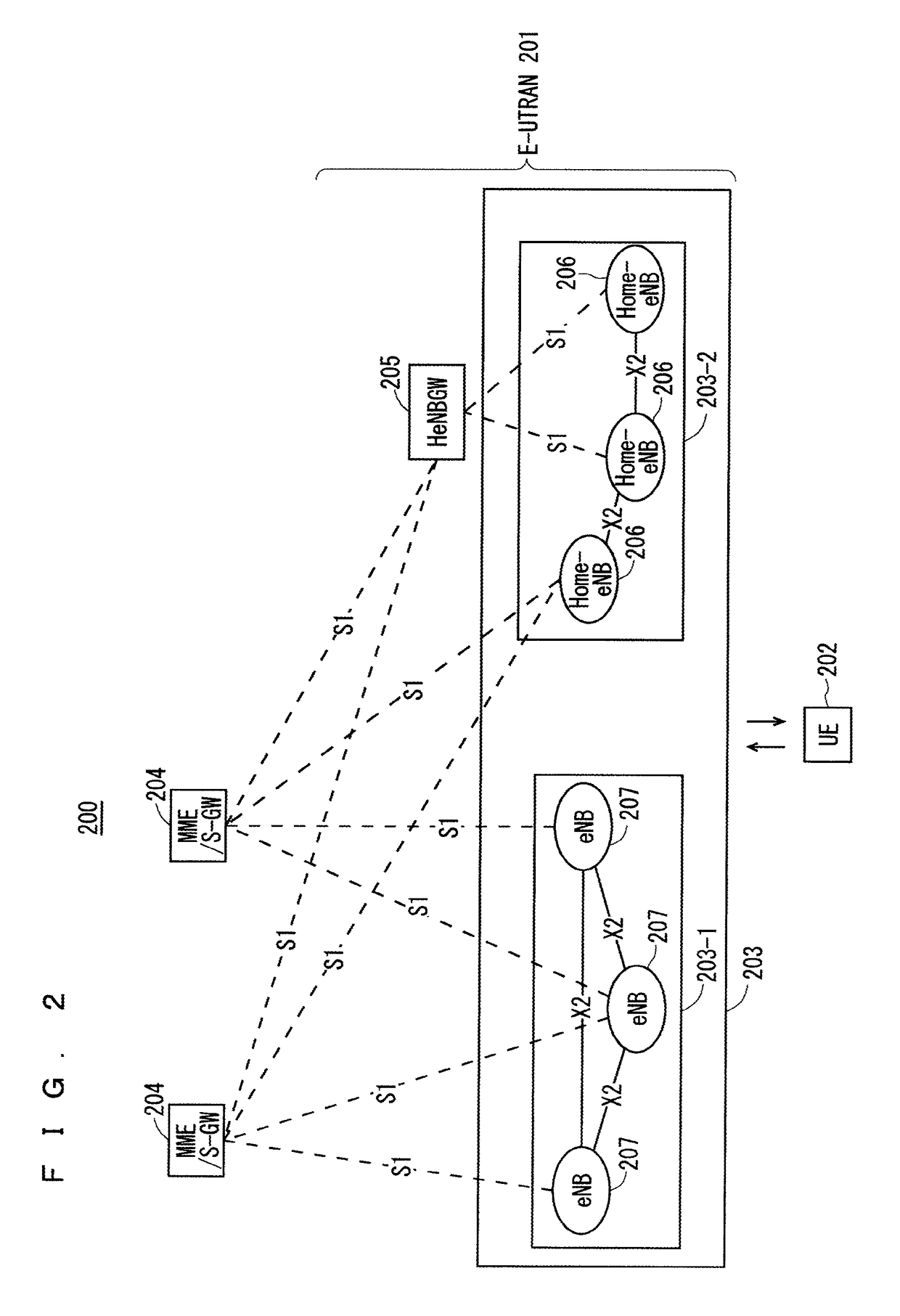Communication system
a communication system and communication technology, applied in the field of communication systems, can solve the problems of rach involving collision risk and fear of insufficient radio resources all over the world, and achieve the effect of high throughput and high accuracy
- Summary
- Abstract
- Description
- Claims
- Application Information
AI Technical Summary
Benefits of technology
Problems solved by technology
Method used
Image
Examples
first embodiment
[0116]FIG. 2 is a block diagram showing an overall configuration of an LTE communication system 200, which is under discussion of 3GPP. FIG. 2 will be described. A radio access network is referred to as an evolved universal terrestrial radio access network (E-UTRAN) 201. A user equipment device (hereinafter, referred to as a “user equipment (UE)”) 202 that is a communication terminal device is capable of radio communication with a base station device (hereinafter, referred to as a “base station (E-UTRAN Node B: eNB)”) 203 and transmits and receives signals through radio communication.
[0117]Here, the “communication terminal device” covers not only a user equipment device such as a movable mobile phone terminal device, but also an unmovable device such as a sensor. In the following description, the “communication terminal device” may be simply referred to as a “communication terminal”.
[0118]The E-UTRAN is composed of one or a plurality of base stations 203, provided that a control pro...
second embodiment
[0251]The first embodiment describes a method for enabling improvement of a throughput by matching phase and amplitude differences among antenna elements included in a multi-element antenna. The second embodiment will disclose a method for solving a problem with requiring a long time to transmit the same number of cal-RSs when mapping of the cal-RSs for each of the antenna elements for calibration temporally varies.
[0252]This method is a method for arranging reference signals for calibration (cal-RSs) in the same subframe in an antenna element that transmits the cal-RSs.
[0253]FIG. 17 illustrates example mapping in transmission data of a first antenna element. FIG. 18 illustrates example mapping in transmission data of a second antenna element to an n-th antenna element. The horizontal axis represents a time t, and the vertical axis represents a frequency f in FIGS. 17 and 18. In FIGS. 17 and 18, a reference “1306” denotes a resource block.
[0254]In the example of FIG. 17, the first a...
third embodiment
[0273]The second embodiment describes a method for temporally localizing the mapping of cal-RSs for each antenna element that is required for calibration to enable shortening of the time required for calibration. However, the transmission sometimes overlaps with those of the other CHs or the other RSs, and the current standards do not cover such requirement. Thus, a non-avoidable problem with the requirement occurs. The third embodiment will disclose a method for solving the problem by providing a new mapping method.
[0274]FIG. 20 illustrates another example mapping in the transmission data of the first antenna element. FIG. 21 illustrates another example mapping in the transmission data of the second antenna element to the n-th antenna element. FIGS. 20 and 21 illustrate example mapping of downlink transmission bits for which a slot or a subframe for calibration or resource blocks 1504 and 1508 are provided.
[0275]As illustrated in FIG. 20, special mapping of not transmitting a part ...
PUM
 Login to View More
Login to View More Abstract
Description
Claims
Application Information
 Login to View More
Login to View More - R&D
- Intellectual Property
- Life Sciences
- Materials
- Tech Scout
- Unparalleled Data Quality
- Higher Quality Content
- 60% Fewer Hallucinations
Browse by: Latest US Patents, China's latest patents, Technical Efficacy Thesaurus, Application Domain, Technology Topic, Popular Technical Reports.
© 2025 PatSnap. All rights reserved.Legal|Privacy policy|Modern Slavery Act Transparency Statement|Sitemap|About US| Contact US: help@patsnap.com



